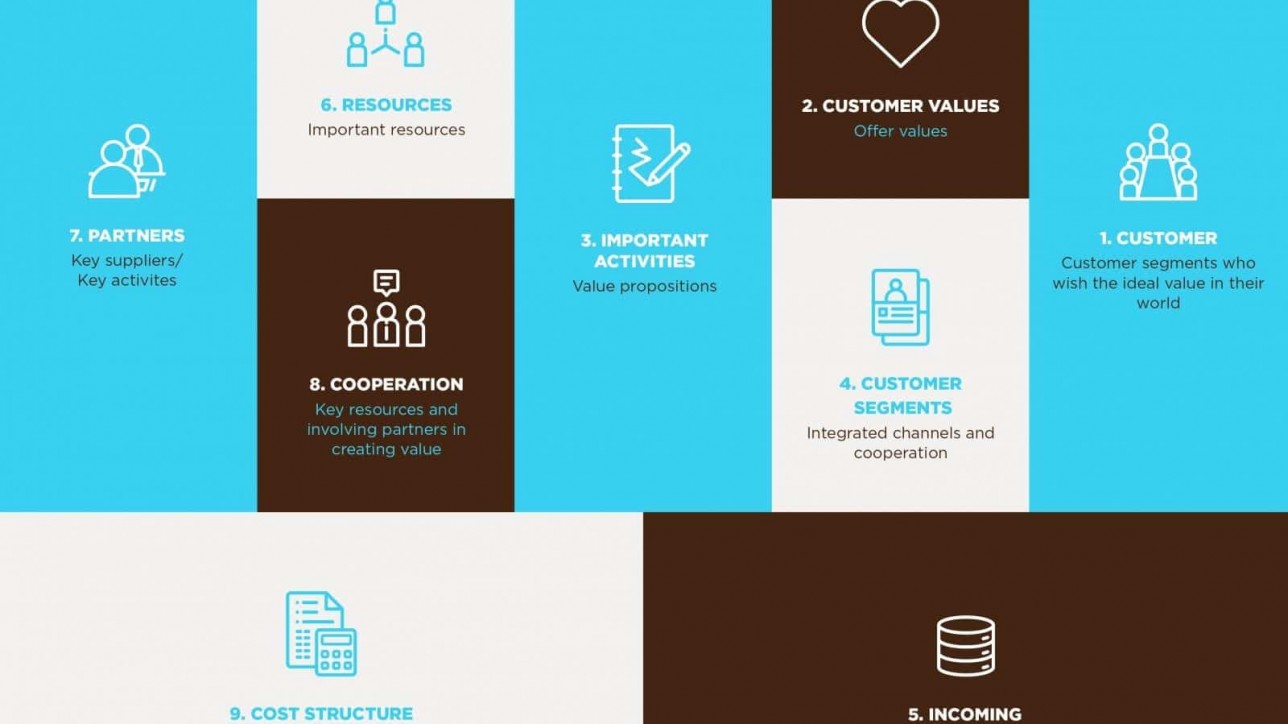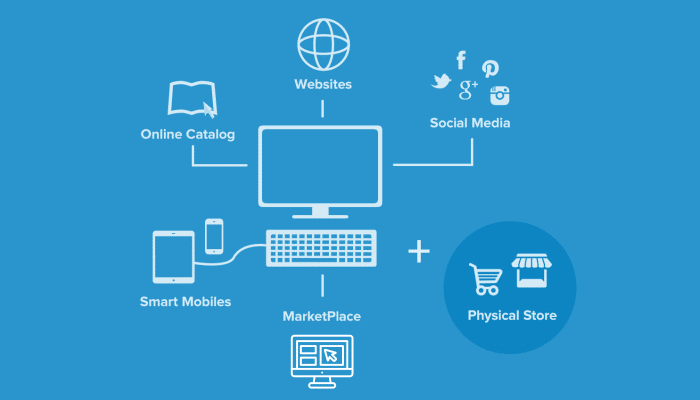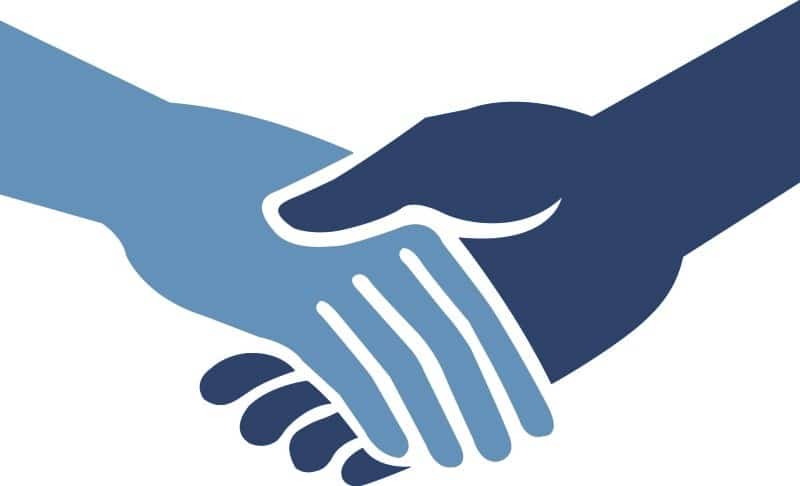BMC stands for the Business Model Canvas which is a strategic tool for management. It is being used to conveniently and quickly define and share a business idea or concept. It’s normally a one page document that showcases the essential elements in the business or product. This is able to create an idea while being coherent and concise.
The right side of the model focuses more on the customer which is the external side. Meanwhile, the left side puts light more on the business itself which is internal. Both of these parts meet into the value proposition. This is the exchange of value that happens between your brand and your customers.
How it can help you
- Helps you create a fast picture of what your idea involves
- Allows people to understand the core of your business and lets you undergo the process of connecting your idea to turning it into a business
- Gives you a look on which kind of customer will be brought to use your system
- Lets everyone get a better picture of how your business will end up being
How to get started
Value Proposition
This is essential in any business or product you’re creating. This is the core concept of the exchange of value that transpires with you and you customers. It’s the value exchanged from your customer for money once the problem is solved or a struggle was finished through your business.
Important Questions to ask upon defining your product/business:
– What problem am I solving?
– Why would someone need to have this problem solved?
-What is the underlying motivator of this problem?Tips:
A smart way of approaching this is through looking at your customer segments and finding out which part the product solves the problem for the customer based on Maslow’s Hierarchy of Needs. If you are selling the product onto other businesses, you are vital and a key partner for them to achieve their own Value proposition onto their customers.
It is key to know the goals that your brand is trying to reach in the Customer Segments and which part your business comes into the value chain.
Customer Segments
This is the process of dividing your customer base into groups. These groups are formed of individuals that are alike in more specific terms like age, gender, spending habits and interests.
Things to consider when making your Customer Segments:
– Whose problem are we solving?
– Who will value our value proposition?
– Are they also a business?
– If they are, what are the traits of these businesses?
– Or are they people?
– Does my value proposition lean more for men, women or both?
– Will it appeal to young adults or teenagers?
– What are the traits of the people looking for my value proposition?Another important aspect for you to consider and understand is the size of your market and how much people exist in your Customer Segment. This will make it easier for you to understand your market both from the micro and macro perspective. A good starting point to getting to know your customer is by creating customer personas for every customer segment.
You can read a more detailed guide of Persona Development here.
Customer Relationships
Now that we have educated ourselves on Value Propositions and Personas, we now have understand the relationship we have with all of our clients. Customer Relationships is how your business interacts and connects with your customers.
It can range from meet ups in person, phone calls or run online that the relationship is online as well.Here are some examples:
- One on One
- Third party contractors
- Online
- Events or Bazaars (one-to-many)
- Phone
A smart step you can take is creating a User Journey Map of all your customers and their interactions with the business. This is able to clarify which points of engagement are used by you and your customers along with the modes you contact them. This is able to help you define your operations as a brand so it lets you see opportunities you can use for automation.
Channel
These channels are the paths you take where your customer finds your business and joins your sales cycle. This is usually part of your marketing plan in your brand.
Questions to Ask when choosing channels for you to reach customers:- How do you inform you customer segment about your value proposition?
- Where are your customers located?
- Are they usually found on social media?
- Are they drivers who are constantly listening to the radio?
- Do they usually attend events and bazaars?
- Do they go home and watch TV every night?
Channel Samples:- Social media
- Public talks
- E-mail Marketing
- Networking
- Search Engine Marketing
- SEO or Search Engine Optimization
- Viral focused marketing
- Influencer and Blog Targeting
- Affiliates
- Existing platforms
- Public Relations
- Trade shows
- Content marketing
- Community building
- Offline advertising (ex. newspaper, TV, radio)
This understanding on how to reach customers is crucial for your business to succeed.
Key Activities
Key Activities of your brand are the moves you make to reach the value proposition to make your customers satisfied and achieve the value proposition.
Important Questions to ask:
- What actions is the brand doing to achieve the value proposition?
- What are the resources being used?
- How much time is it taking up?
- Are there any experts working on the project?
- How are the products being distributed?
- Is technology being utilized to develop the product?
- What strategies are being done?
- How much human resources are being used?
- How much activities will it need for you to achieve this value exchange?
Some examples of Key Activities:- Consulting
- Designing
- Web development
- Cooking
- Driving
- Graphic Design
- Marketing
Key Resources
After settling onto the activities you need to do, you must then consider the resources needed to do these activities. These will help you achieve the key activities for you business.
These resources are what is normally needed to fulfill the activities in your business:
- Office
- Computers or Laptops
- Hosting
- Staff or Employees
- Stable Internet connection
- Car
- Microwave
- Cabinets
- Electricity
- Furniture
Key Partners
Key Partners the external companies or suppliers that you will be needing in order to do the key activities and provide the value to your customer. The question to ask with this realm is ‘If the business cannot create the value proposition on its own, who else do I need in order to do it?’A good examples of this is ‘If I own a cafe that also sell desserts, I may need a bakery to supply the desserts for my cafe.’
These people are key partners that will help you reach your value that you promise to your customers.
Cost Structures
The cost structure is the money needed for you to operate your business stably.
Here are some questions to account for in knowing your cost structure:
- How much is it to reach our businesses key activities?
- What are the total cost for my key resources and partnerships?
- How much will it cost to get the value proposition for my clients?
- Do I have any additional costs to run my business?
- How much do I pay for legal costs?
- Will I make use of insurance and how much will it be?
- How much time will it take for me to create my value proposition?
- How much will you charge to get hired?
- What are the opportunity costs in running your business?
Revenue Streams
Revenue Streams are the ways your business turns your Value Proposition into monetary gain. This is why it’s signficant to educate yourself on pricing your products and services accordingly so that the pain of purchase will equate to the pain of solving the problem of the customer.
At this point you may want to know, how do you gain revenue?
There is a variety of revenue models like:
- Pay per product (pay per view)
- Fee for service
- Fixed rate
- Subscription
- Dividends
- Referral feeds
- Freemium
- Equity gain







